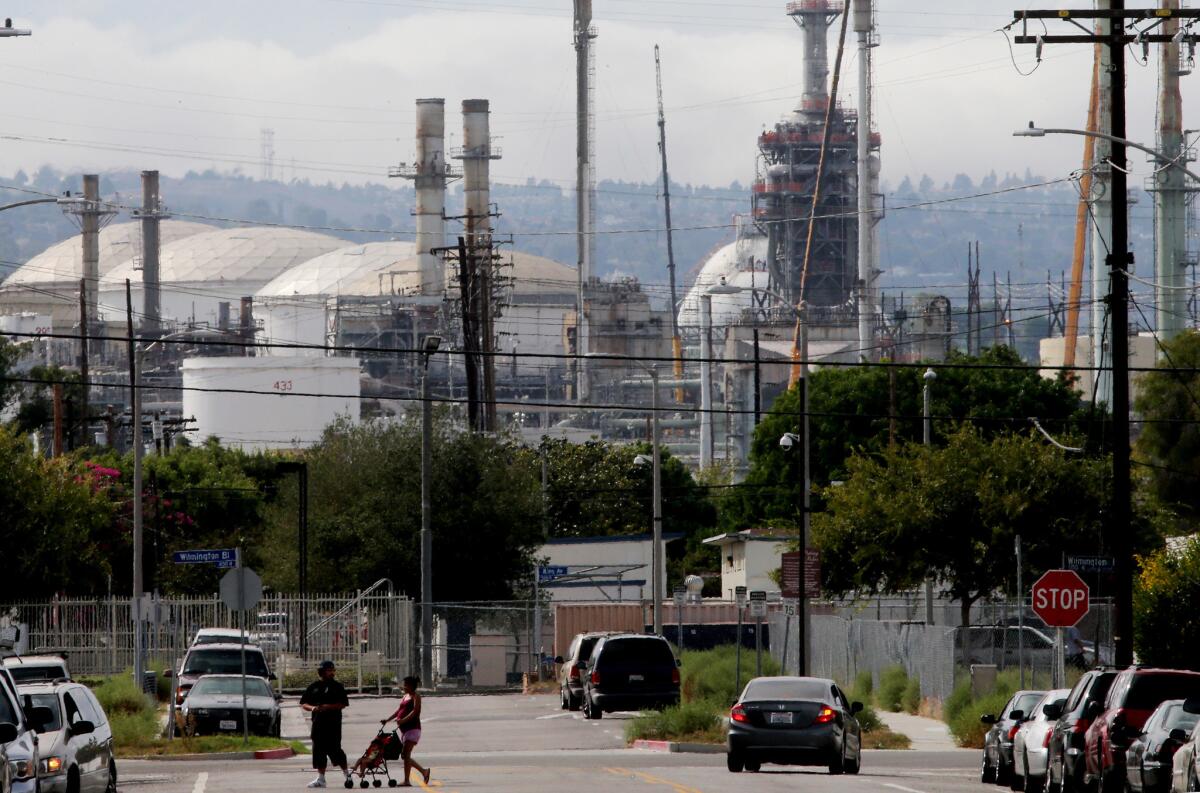Here’s how California could change its cap-and-trade program for climate change

- Share via
California has some of the world’s most extensive policies for slashing greenhouse gas emissions, including regulations on vehicle tailpipes and requirements for renewable energy. But none of them has drawn as much attention as the cap-and-trade program, which requires companies to buy permits to release emissions into the atmosphere.
It’s a complex system intended to provide a financial incentive for oil refineries, food processors and other industries to clean up their operations, and state lawmakers are debating whether to extend the program. Although many of the proposals are highly technical, they could have a dramatic effect on the state’s fight against global warming.
Here’s a look at how cap and trade works now and how it could work in the future:
What kinds of pollution would be targeted?
Assembly Bill 378
- This proposal would modify the program so it also limits criteria pollutants, including smog-causing nitrogen dioxide, and toxic air contaminants, such as perchloroethylene from some dry cleaning operations.
- Companies would face stricter rules on greenhouse gases if they violated regulations on other kinds of pollution.

How much would emission permits cost?
Senate Bill 775
- This proposal would set stricter rules for minimum and maximum prices of permits during state auctions, and the prices would increase annually at steeper rates.
- In 2021, bids would need to stay between $20 and $30. By 2030, the price range would be between $60 and $120.
- No permits would be distributed for free.
- Supporters of the proposal believe the higher prices would provide a better financial incentive for companies to clean up their operations.
How much money would be generated and where would it go?
Senate Bill 775
- Legislative analysts have not estimated how much revenue the proposal could generate, but it could reach tens of billions of dollars because of escalating prices.
- Money would be allocated to environmental projects, scientific research and rebates to Californians, but it hasn’t been decided how much would go to each.
- The rebate, called a “climate dividend,” would help offset higher costs for gasoline and electricity that could result from state regulations.

How would the program help the state meet its emission goals?
Senate Bill 775
- This proposal would require the state to sell an unlimited number of permits if the price reaches the maximum level.
- By making this change, supporters say there would be less chance for price spikes during auctions or in the secondary market.
- Opponents say this would make the program function more like a tax and provide less certainty that the state will meet its goals.
How would the program support other environmental projects?
AB 151 and SB 775
- Opponents of offsets are skeptical of their environmental benefits or dislike the opportunity for California companies to meet their obligations without changing their own operations.
- There’s also opposition because offsets can be financed anywhere in the country. AB 151 would encourage companies to develop offsets in disadvantaged communities.
- SB 775 would go a step further, preventing the use of any offsets to comply with regulations.
Twitter: @chrismegerian
ALSO
California set an ambitious goal for fighting global warming. Now comes the hard part
As the White House changes course on climate change, California stubbornly presses forward
Trump is creating a void on climate change. Can California persuade other states to help fill it?
Get the L.A. Times Politics newsletter
Deeply reported insights into legislation, politics and policy from Sacramento, Washington and beyond. In your inbox three times per week.
You may occasionally receive promotional content from the Los Angeles Times.








